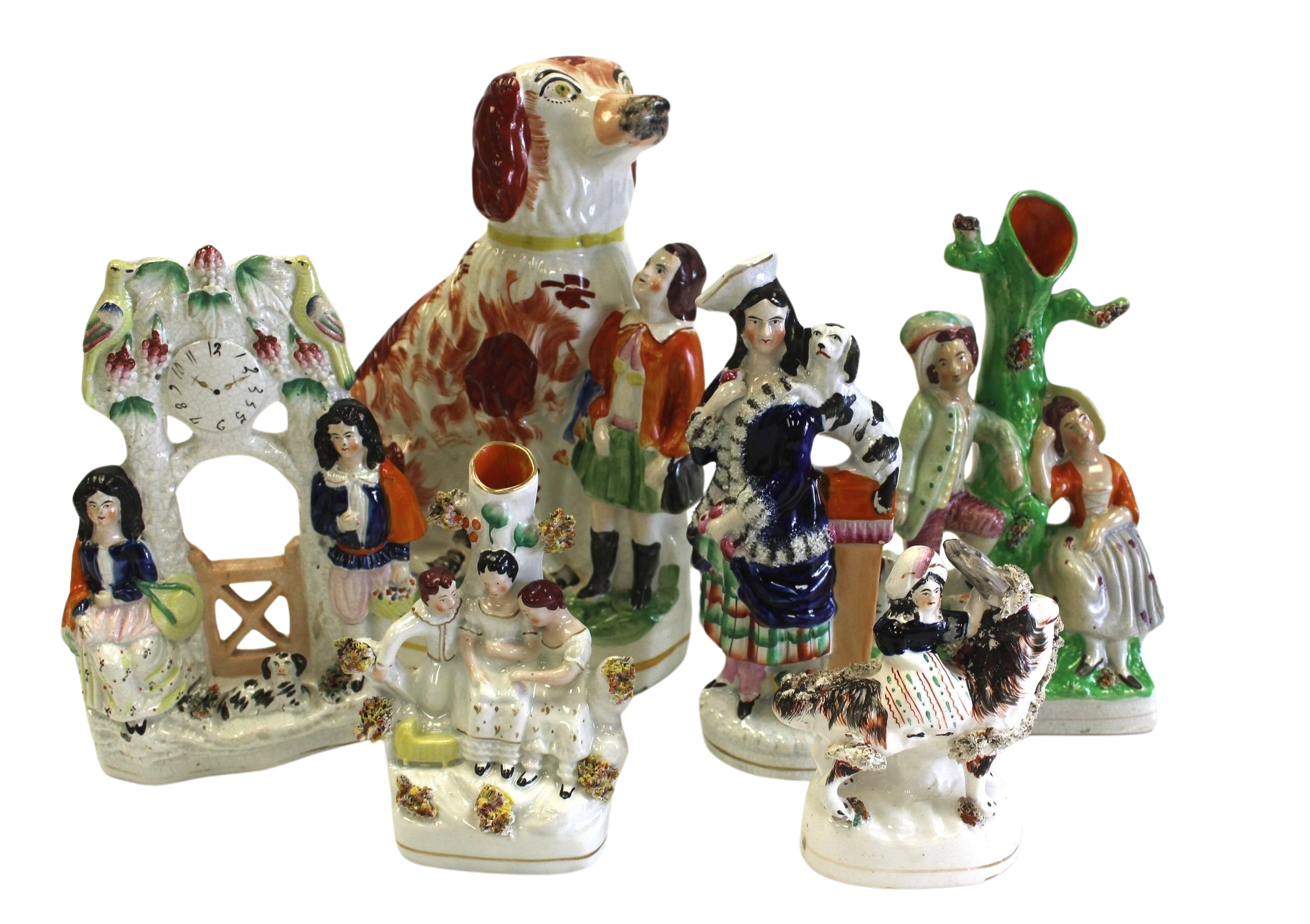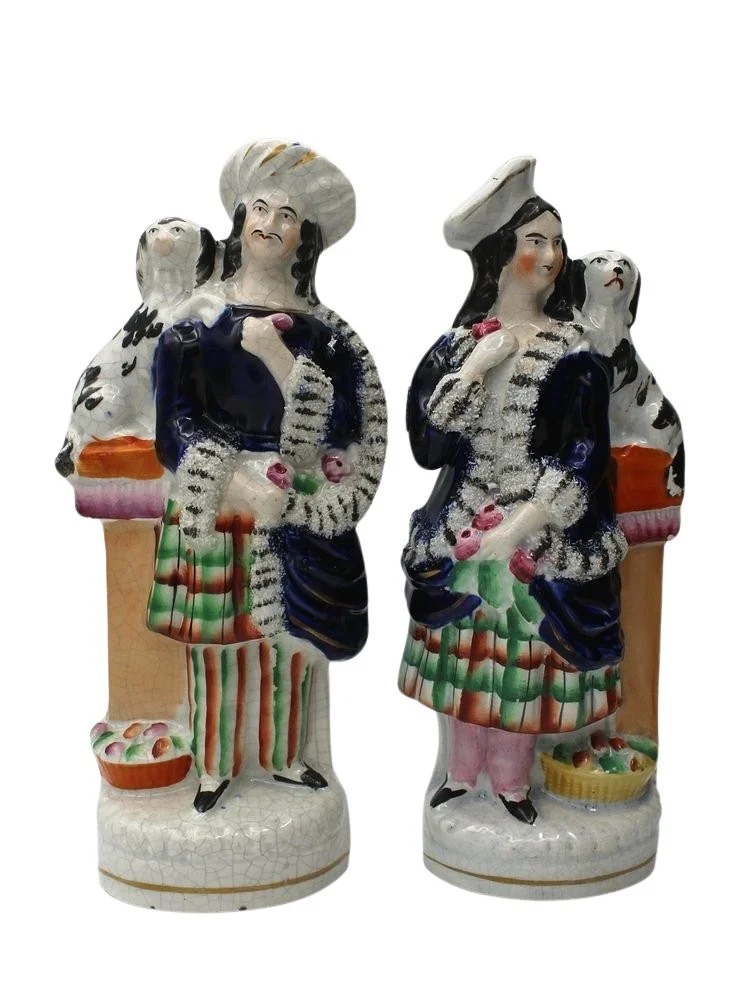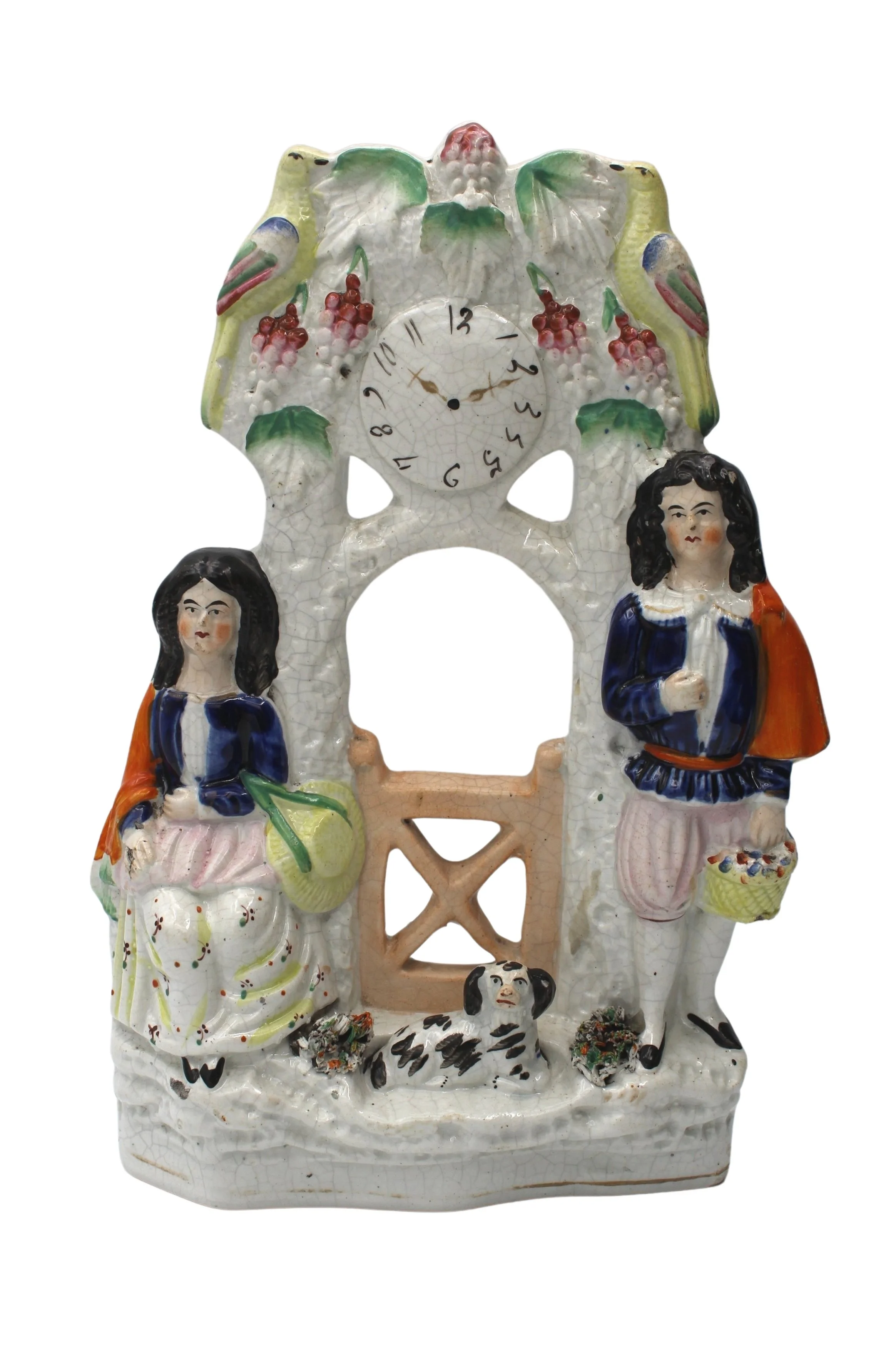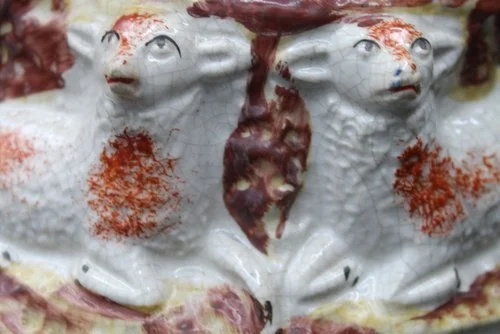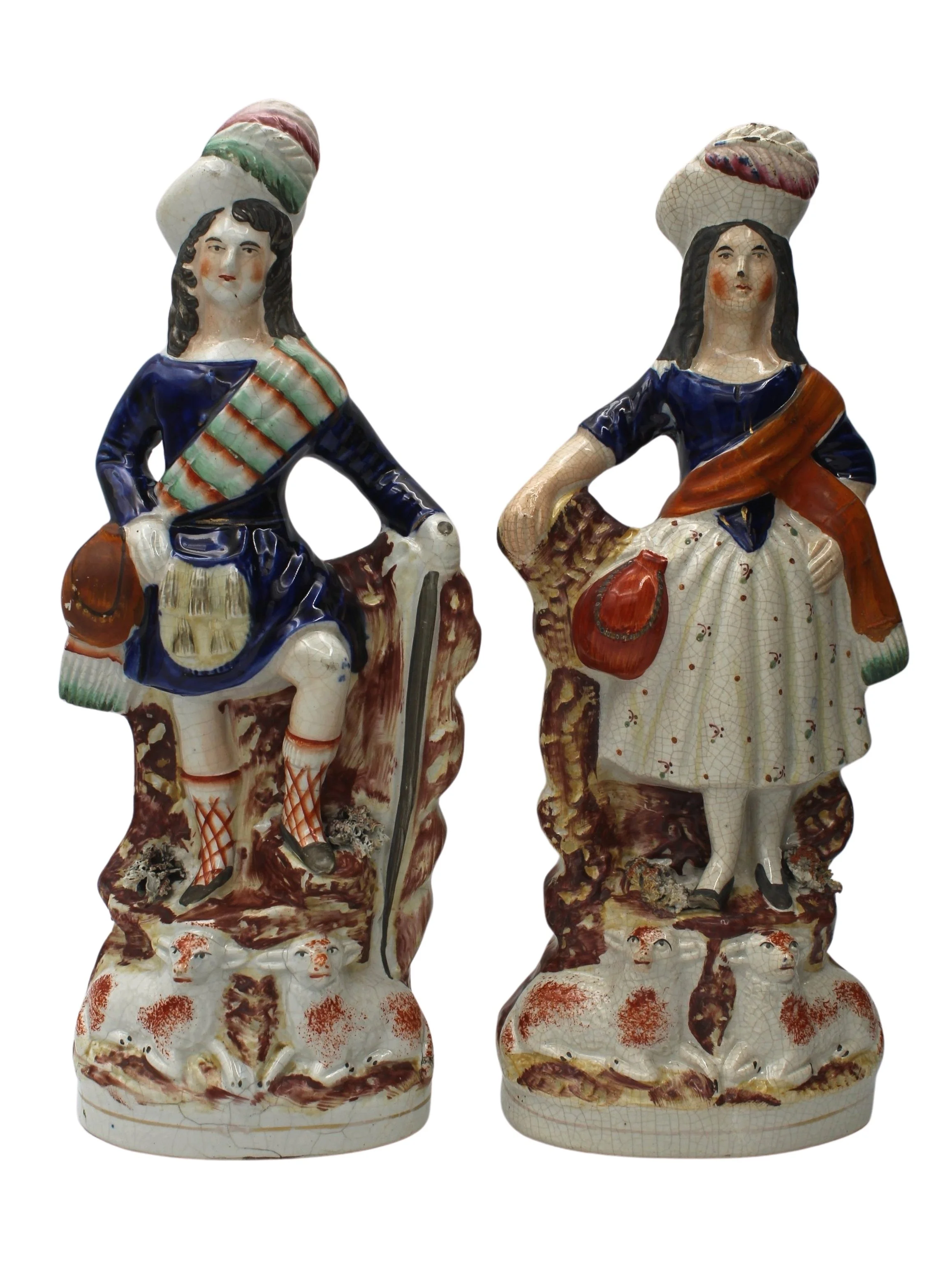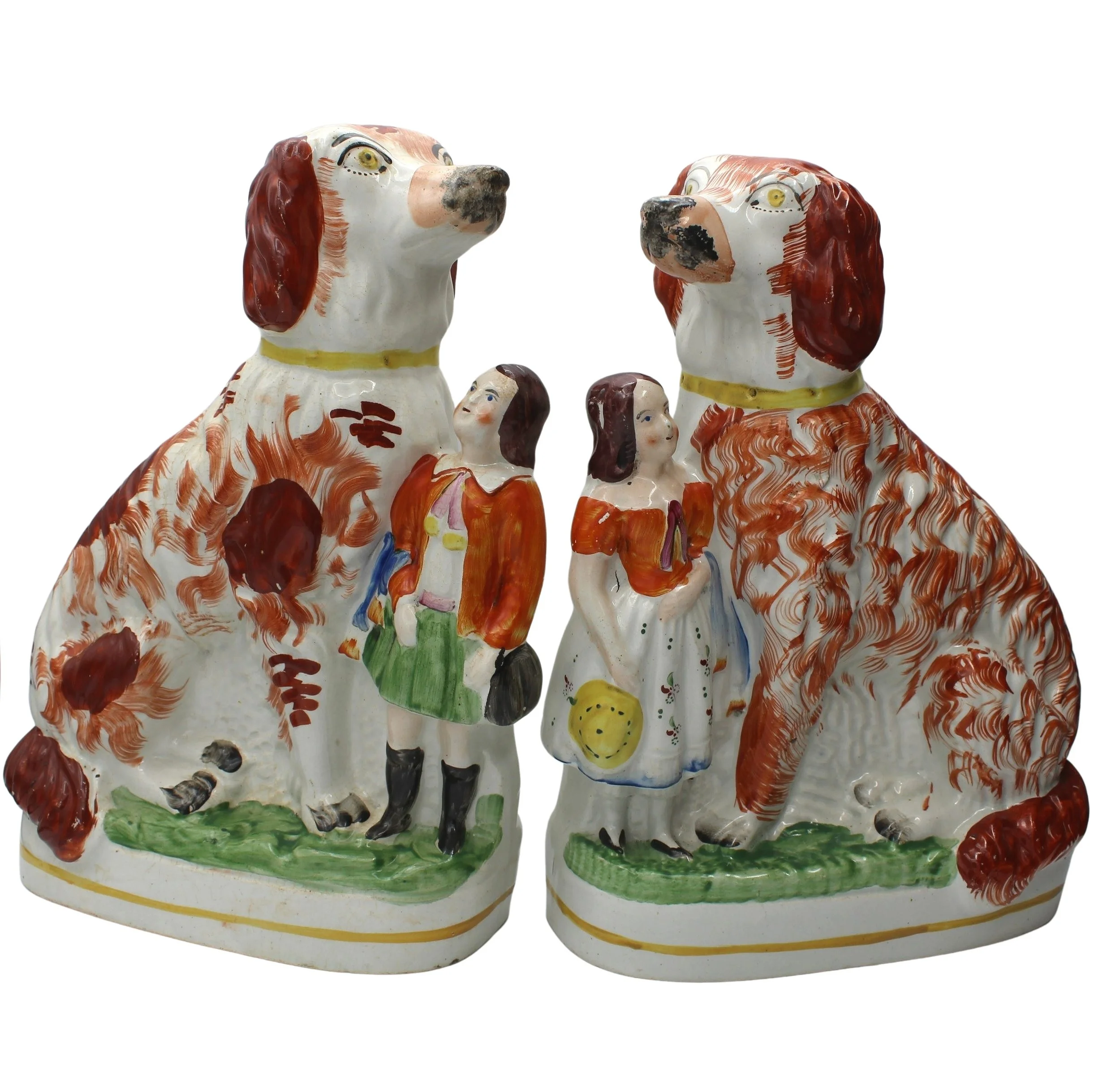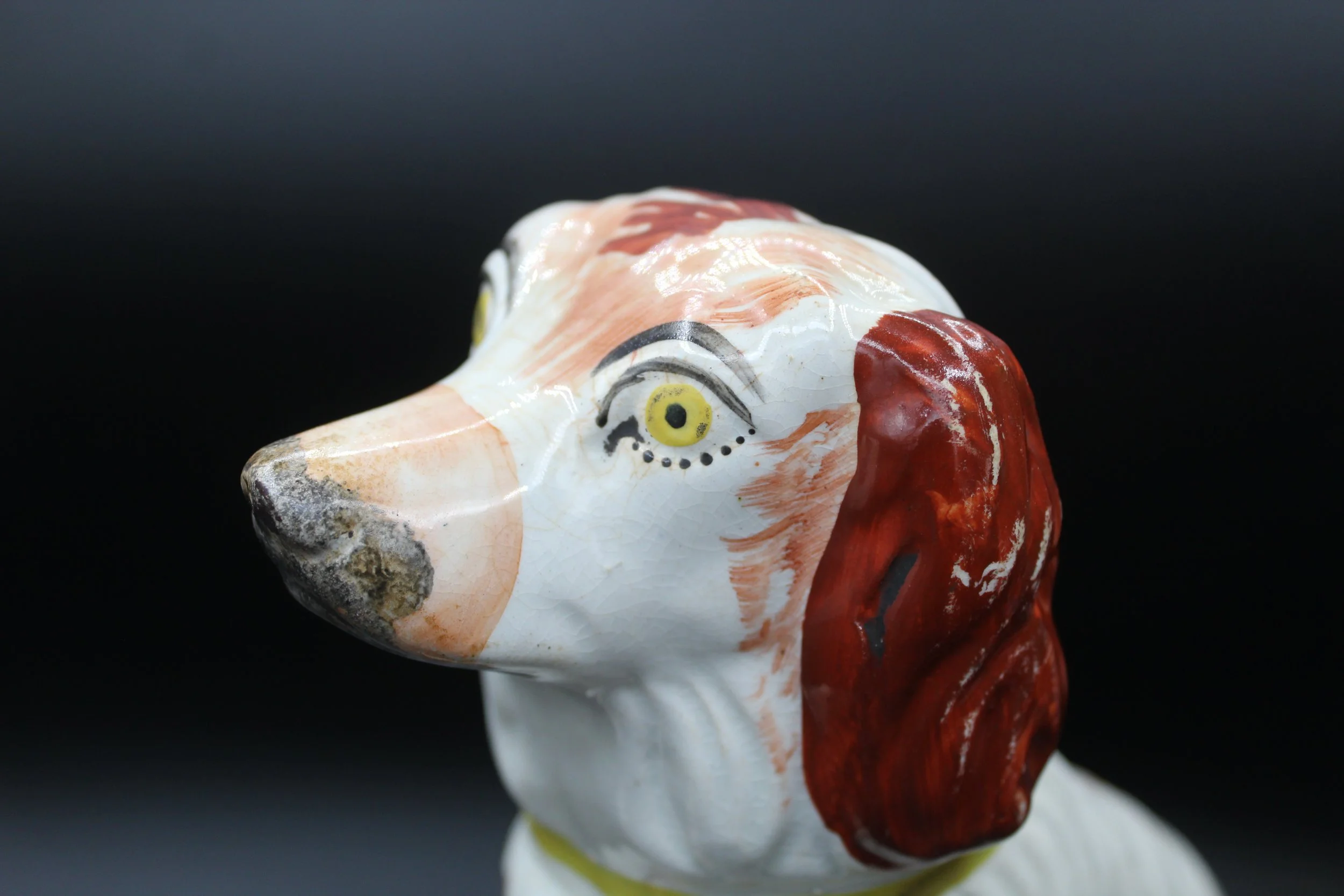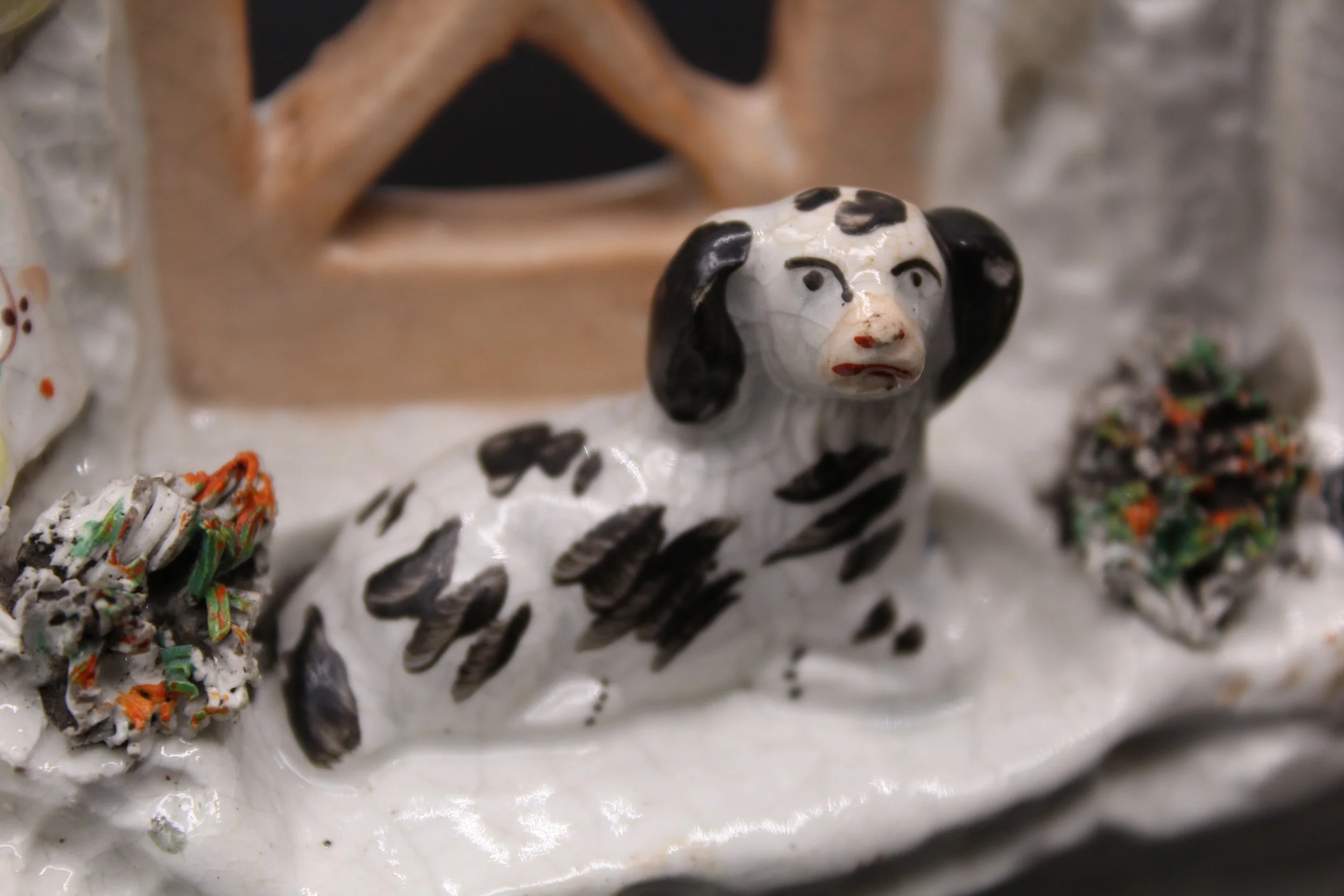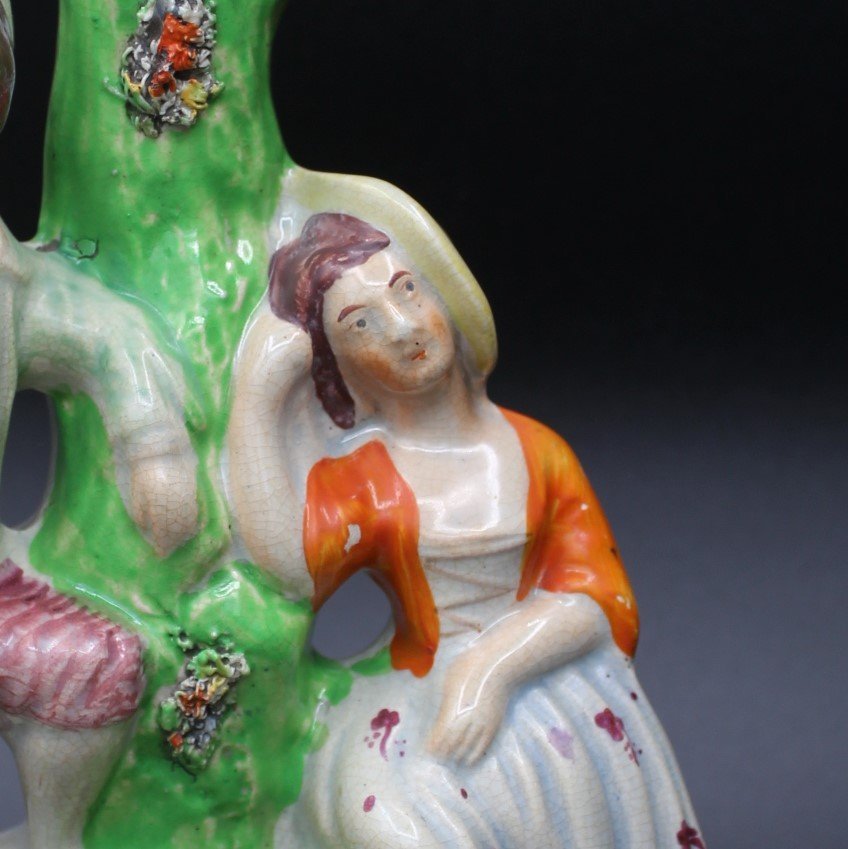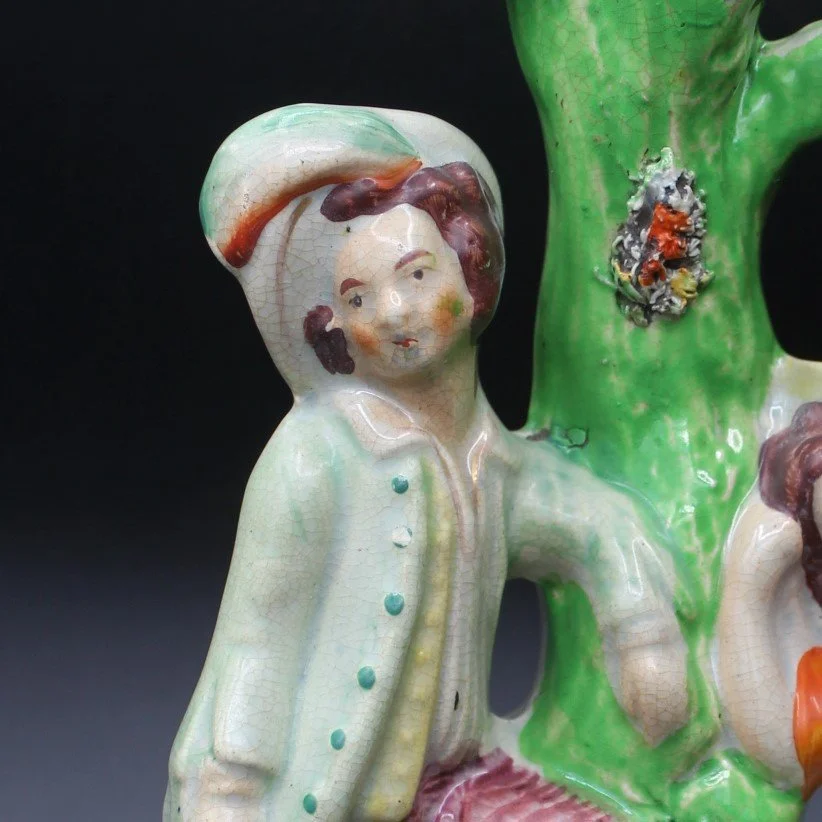
Staffordshire Figures
Pastoral pop culture and iconic dogs
Staffordshire figures were made in Britain’s Staffordshire region from the 18th to the end of the 19th century and are reproduced to this day.
Like Gaudy Welsh, these pieces can be referred to as rustic. Their somewhat lumpy shapes and imperfect decoration reflect how they were made.
Staffordshire figures are made of press-moulded earthenware and were decorated quickly by hand. They initially tried to imitate porcelain and were eventually superseded by the finer material.
Various Staffordshire pieces. Shown in further detail and identified below.
These figures’ clearly handmade nature and pastoral subject matter appeals to fans of folk art and those who appreciate funny little creatures.
These cheap, popular figures reflect demand for images and decoration in the 19th century. They also reflect shifts in collecting culture in the 20th century.
The figurines in the Laidlaw collection are likely from the Victorian period or later.
Man and woman with dogs. Staffordshire, England, c. 1837-1863. 26 cm tall. 1994.1.25a (left) and 1994.1.25b (right)
Jean Shields’ collection shows the softer side of Staffordshire.
Like modern porcelain figures, Staffordshire figures allowed people who weren’t wealthy to collect decorative objects.
They also feature sweet, inoffensive subjects, like children, animals, and couples in folk costume.
Decorative clock stand with girl, boy, dog, and birds. Staffordshire, England, c. 1837-1864. 25 cm tall. 1994.1.27
Staffordshire also had a lowbrow side, functioning as a three-dimensional representation of Victorian news and popular culture.
Detail of 1994.1.29
People received and reacted to the news by purchasing, displaying, and talking about these figures. Popular subjects included generals in the Crimean War, members of the Royal Family, sensational murder scenes, and famous actresses in starring roles.
Detail of 1994.1.26b
Staffordshire figures feature varying amounts of moulded and painted detail.
This Irish shepherd and shepherdess pair have complex decoration and were likely moulded in multiple parts. These two have gradients, stippling, coloured details, and layered glaze. Can you see where?
Irish shepherd and shepherdess with sheep. Staffordshire, England, c. 1837-1863. 28 cm tall. 1994.1.26a (left) and 1994.1.26b (right)
Sculpts and decoration were simplified over time.
Earlier figures often required individual parts—like limbs—to be moulded separately and attached together.
Later, simpler pieces often required three-piece moulds. They often had flat backs, which were shaped simply and left unpainted.
This is the most crudely sculpted figure in Jean’s collection. Nevertheless, it has its own charm.
Girl riding a donkey. Staffordshire, England, c. 1837-1863. 14 cm tall. 1994.1.31
This is the most dynamic Staffordshire figure in the Laidlaw collection.
The odd proportions, with children that resemble shrunken adults, are typical of this collection.
This vivid blue underglaze, a common feature in Jean’s collection, would likely increase this piece’s value to collectors.
Spill vase with man and boy dancing. Staffordshire, England, c. 1837-1863. 17 cm tall. 1994.1.29
Collectors had little interest in Staffordshire figurines until the early 1950s.
Before then, very few collectors were interested in these figures, which remained inexpensive and easy to obtain. The tide turned when some collectors published books and articles about their finds. More collectors became interested, and prices rose—and kept rising.
Pair of Staffordshire dogs with disproportionately small children. Staffordshire, England, c. 1863-1900. 31 cm tall. 1989.1.24a (left) and 1989.1.24b (right)
Staffordshire dogs are especially popular with collectors.
The large size of these dogs enabled intricately detailed decoration. Layers of curved brush strokes simulate curly fur, stippled black glaze creates shading on their muzzles, and each dog has pupils and eyelashes.
Details of 1989.1.24a (upper left), 1994.1.25b (upper right), 1994.1.28 (lower left), and 1994.1.27 (lower right)

Certain characteristics can increase a figure’s desirability and price.
Collectors generally prefer large, boldly coloured, clearly moulded, rare figures, with titles written on their bases.
The cobalt blue underglaze on Jean’s figures was used before 1863 and is popular with collectors. However, some collectors prefer the white and gilt figures that were produced later.
The white-and-gilt coloration is typical of Staffordshire figures made after 1863. However, this form may come from a mould used by Dudson in the late 1840s.
Spill vase with mother and children reading. Staffordshire, England, 19th century. 17 cm tall. 1994.1.30
Spill vase with man, woman, dog, and sheep. Staffordshire, England, 19th century. 26 cm tall. 1994.1.28
Jean’s collection gives a sense of her interests and taste, as well as her approach to collecting Staffordshire figures.
She seems to have collected these figures with the eye of an interior designer, rather than an antiques dealer or historian.
Her pieces have a serene, shelf-ready quality.
Each couple has matching hair colours and wears old-fashioned, coordinating clothing. They seem to be enjoying leisurely activities outdoors.
Each piece carries a strong sense of nostalgia for the peace, and the pause, of country cottage life.
Unlike Jean’s typical preference, these figures are united by shades of bright green and orange.
Brunette man and woman. Staffordshire, England, c. 1863-1900. 27 cm tall. 1994.1.24

